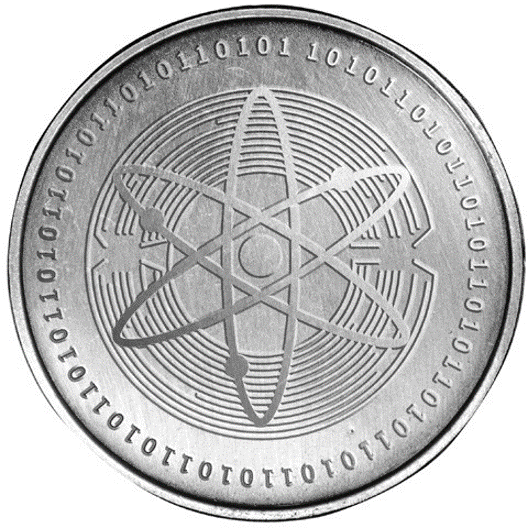Developed in 2016, the Cosmos blockchain aims to bridge the gap between decentralized networks without relying on central servers. Founded on the vision of creating an interconnected ecosystem of open-source blockchains, Cosmos has been hailed as the “Internet of blockchains” due to its focus on seamless communication between distributed ledgers. Some key aspects of Cosmos include:
- Interoperability: Cosmos facilitates communication between various blockchains, breaking down barriers and promoting technological advancement.
- Early Adoption: With over $151 billion worth of digital assets managed across platforms like Binance Chain, Terra, and Crypto.org, Cosmos demonstrates its potential to drive innovation in the blockchain space.
- Challenges in Interoperability: Historically, achieving interoperability between separate systems has proven difficult for developers, necessitating solutions like Cosmos to overcome these obstacles.
By providing a free platform for interoperability, Cosmos empowers developers to build applications that span multiple chains, unlocking new possibilities for collaboration and integration across the blockchain landscape.
What is Cosmos?
The Cosmos Network consists of a series of connected blockchain ecosystems united via the Cosmos Hub. Its primary objective is to function as the “Internet of Blockchains,” enabling smooth and secure interaction, information exchange, and transaction processing between distinct autonomous blockchains, all supported by the Cosmos Hub and safeguarded by over 180 validators. The native currency of Cosmos is ATOM. ATOM tokens play a crucial role in the Cosmos Network:
- They serve as payment for transaction fees.
- Staking ATOM enhances network security.
- Holders of ATOM can cast votes on proposals put forth by the Cosmos Hub.
Within the Cosmos ecosystem, there are currently over 249 interchain applications and services available.
How does Cosmos Work?
Cosmos offers a unique approach to decentralization and interoperability by empowering dapp developers to create their own blockchains:
- Tendermint: Comprising a consensus engine (Tendermint Core) and a standardized application interface called ABCI, Tendermint provides developers with essential tools for implementing networking and consensus layers. This simplified development process includes prebuilt engines for applications.
- Cosmos SDK: Known for its modularity and security, the Cosmos SDK is a development framework designed to make building custom blockchain solutions easier and more flexible. Notable examples using the Cosmos SDK include Cronos, a layer-1 blockchain.
- Inter-Blockchain Communication Protocol (IBC): IBC is a groundbreaking protocol that fosters communication between various blockchains within the Cosmos ecosystem. By promoting interoperability and establishing trustless connections between blockchains, IBC plays a vital role in driving innovation and growth within the Cosmos network.
Cosmos SDK and Use-Cases in the Cryptocurrency Industry
Cosmos SDK is used for building blockchain applications. Launching applications in Cosmos can be done in three steps:
- Creating a Custom Blockchain: Developers can customise their models or prebuilt models to build a blockchain.
- Launching a Custom Blockchain: Cosmos SDK accommodates different use cases when it comes to launching a custom blockchain. This includes applications for gaming, healthcare, prediction markets, cross-border payments, and real estate.
- Connecting to the Cosmos Network: After launching an application-specific blockchain, Cosmos SDK allows for the growth of a user base and an increase in liquidity by connecting to the Cosmos Network through the IBC, opening doors to over 100 IBC-enabled chains.
Cosmos Ecosystem
Over time, the Cosmos ecosystem has experienced significant expansion beyond just the Cosmos Hub. Some notable projects within the network include:
- Cronos: Based on the Cosmos SDK, this EVM-compatible blockchain supports fast migration of apps and smart contracts from Ethereum and similar EVM-enabled chains.
- Celestia: A pioneering modular data availability blockchain network.
- Injective: A cutting-edge Layer-1 blockchain tailored to accommodate the future wave of DeFi applications.
- THORChain: A decentralized cross-chain liquidity protocol enabling asset swaps between diverse blockchain networks.
- Nomic: A Layer-1 blockchain featuring a decentralized, non-custodial Bitcoin bridge connecting Cosmos and native BTC, converting BTC into nBTC (an IBC-compatible token).
What is the ATOM Token?

The Cosmos Hub is the first Cosmos-based blockchain to launch on the Cosmos Network. ATOM is the native token of the Cosmos Hub.
- ATOM is used to pay transaction fees on the Cosmos Network.
- Staking ATOM contributes to the security of the network; stakers earn rewards based on the amount of ATOM staked.
“The Cosmos Network consists of a series of connected blockchain ecosystems united via the Cosmos Hub. Its primary objective is to function as the “Internet of Blockchains,”
- ATOM stakers and validators receive a share of the transaction fees generated by chains that use the Interchain Security feature offered by the Cosmos Hub.
- ATOM holders can vote on proposals presented by the Cosmos Hub.
Tokenomics of the ATOM Token
- ICO:The Interchain Foundation (ICF) raised US$16.8 million for the funding of the Cosmos Network in 2017
- Initial Total ATOM Supply: 236,198,958
- Current ATOM Supply: 292,586,163
- Inflation Rate: 14.22%
Shariah Opinion
The ATOM token can be considered Shariah compliant. It’s use cases do not breach Shariah principles.
Conclusion
Based on and subject to the foregoing information, and for the purposes of this conclusion, nothing has come to our attention that causes us to believe that ATOM is in breach of Shariah* principles and rulings as adopted by the scholars conducting this research.
*Your Attention is drawn to the term ‘Shariah’ and ‘Shariah compliant’ and its interpretation thereof as expressed in the following link https://shariyah.net/glossary/



